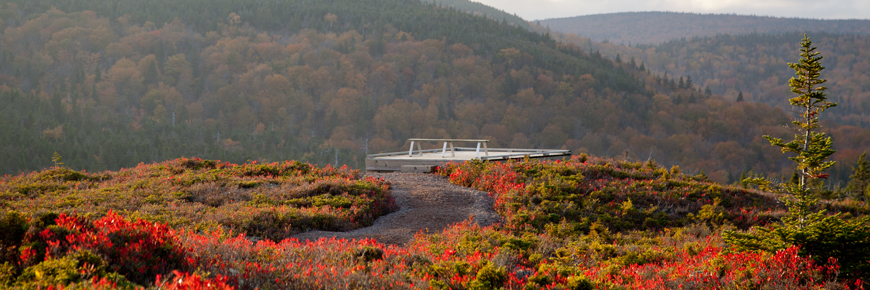
Causes of species becoming at risk
Cape Breton Highlands National Park
Habitat disturbance or destruction
A species' survival depends on the survival of its habitat. If the area where it lives, feeds or breeds is disturbed or destroyed then the species has to adapt to the change or it will die. For example, the endangered piping plover nests on sandy beaches. Humans use these same beaches for recreation and can cause adults to abandon their nests.
Nests are well camouflaged and can easily be destroyed by people walking or using all-terrain vehicles (ATVs). Predators of eggs and chicks are another threat. Because many nest predators are attracted to garbage, the number of predators can increase when people leave garbage around, therefore affecting the plover's survival.
Invasive non-native species
Sometimes species which are not native to an area become introduced by accident or on purpose. These species can become a threat if they out-compete the existing species for food and habitat or if they predate on the native species. For example, the bobcat came to Cape Breton with the creation of the causeway connecting Cape Breton to mainland Nova Scotia. They compete with the native lynx for habitat and food. The lynx is now considered to be a species at risk in Cape Breton.
Global changes
Climate changes (e.g. global warming) and global pollution (e.g. acid rain, radioactive fallout, destruction of ozone layer) can cause certain species to become at risk. Most species have limited tolerance for environmental changes, and if this tolerance is exceeded the species' populations will suffer. For example, amphibians (frogs and salamanders) have been declining on a world-wide basis.
Many reasons have been hypothesized for this decline. One possible reason could be the increase in pollutants, such as acid rain, which affect the development of their eggs. The reduction of the ozone layers and increase in UV light, caused by pollution, may also be a factor in poor egg development.
- Date modified :